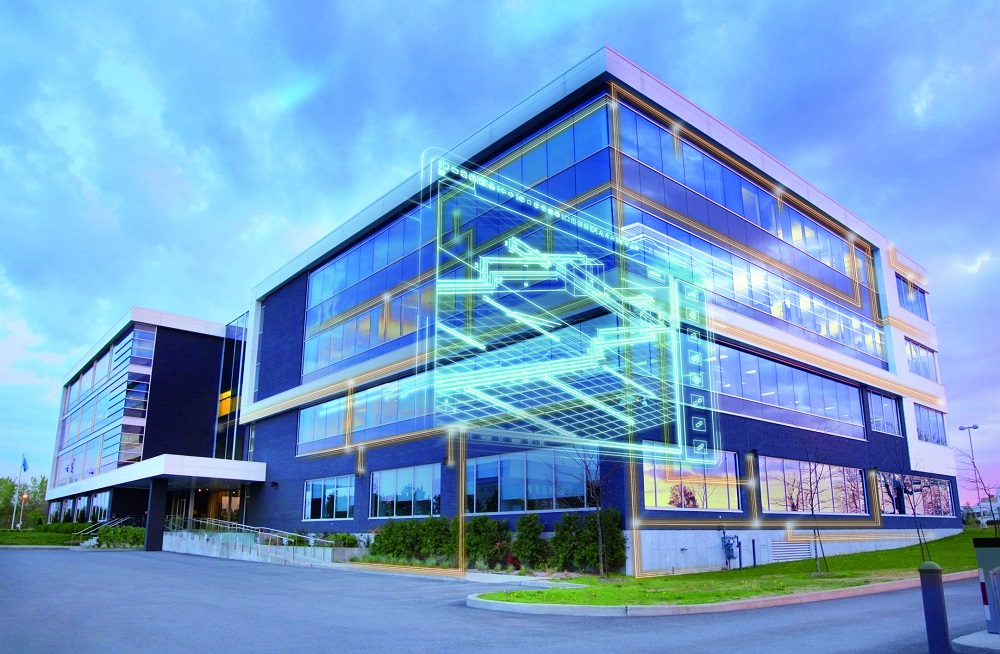How is thermal simulation software keeping products and people cool?

In our previous blog, Thermal simulation helps Maya HTT keep things cool, we discussed how Maya HTT demonstrated the accuracy and efficiency of their thermal simulation software by creating an intriguing contest at their exhibition booth at Realize LIVE 2019.
Maya HTT froze a gift card inside a block of ice and offered booth visitors the opportunity to guess when the gift card would “drop” for the chance to win it. They offered participants a thermal simulation calculating the time the gift card would be released from the ice and they could use that information to make their guess. The participant with the closest guess won the gift card.
To predict melting and determine the results of the Ice Challenge, Maya HTT took the environmental data, such as the dimensions of the ice block, changes from ice to water, water runoff, room temperature, characteristic airflow speed, the starting temperature of the ice itself and other factors and entered it into their computational fluid dynamics (CFD) code.
The start of the Ice Challenge began at 8:00am and concluded at 5:50pm running over by just four minutes.
Also, in the previous blog, we explained how thermal simulation is helping shipping companies ensure temperature-sensitive products like produce and pharmaceuticals can make it from the processing center to their destination.
Using thermal simulation is beneficial regardless of the product size. Here are two ways that thermal simulation is helping companies keep their audiences comfy and their cables cool.
Transmission cables: supplying energy without overheating
Transmission cables stretch hundreds of miles and, along the route, are subject to various heating and cooling environments. Environmental temperature, cable depth and soil characteristics play a significant role in designing the cooling properties of high voltage electrical cable.
Thermal simulation tools allow engineers to predict how hot the cables get based on a myriad of factors such as the diameter of the copper or material used for wires, the composition of the cable, the number of wires, length, information about the electric current and voltage. These factors are used to determine how the transmission cable heats up and the most optimal ways to design cooling features into the cable.
The information isn’t all that different from cold chain.
Except, the real challenge and difference is characterizing the soil in which the cable lies. Soil type can vary widely across the smallest spaces. To best plan the cooling feature of the transmission cable, the client provides worst case scenarios ensuring they run multiple simulations based on soil conditions and compositions that can change with the season; the amount of heat that gets conducted away from humid or damp soil reacts differently than if it’s dry or powdery.

Sports arena: keeping thousands of fans comfortable
From season ticket holders to the families spending countless hours watching their children play weekend sports, keeping arena attendees comfortable is a complex task. Sports arenas have complicated HVAC systems designed to ensure audience comfort when there are tens-of-thousands of fans and hundreds of personnel inside a building that’s over 150,000 square feet.
The goal of the simulation is to understand the comfort level of the occupants and how to produce a functional cooling or heating system. Simulation not only factors in the type of walls and windows, exterior and interior temperatures and air speed, but must include the heat and humidity generated from the human body. Even the ice in a hockey game is data needed to simulate the comfort level as the melting water imposes cooling and humidity into the arena.
By simulating the buildings HVAC system and occupied space, engineers can develop a comprehensive 3D thermal/flow simulation of the systems to see how it functions in the confines of a sports arena whether empty or filled to capacity. This information, for example, can show where dead spots may exist and simulate placing a ventilation duct in that area to see how it benefits occupants.
3D thermal/flow simulation is being used in other building construction and for retrofitting older structures as well to make them more eco-friendly and efficient.

Simulate everything
Thermal simulation tools are providing multiple industries with the ability to assess and predict product performance and determine the likelihood of overheating and excessive thermal stresses. Maya HTT is helping companies innovate and maximize their processes and products with their expertise/services and thermal simulation software. From the smallest PCB to the largest sports arena to the rovers and satellites sent to other planets, simulation is proving it can minimize costs, reduce time-to-market and boost performance.
Click here to learn more about how simulation is changing the way businesses design and build their products.
Carl Poplawsky, Engineering Simulation Services Manager, MayaHTT contributed to this blog.
Mr. Poplawsky has been providing computer aided engineering (CAE) based services for nearly forty years, starting in the “good old days” when engineers would sketch finite elements on to 2-dimensional drawings and measure node locations with an engineers’ scale. He has been with Maya HTT for 15 years, supporting both CAE software sales and engineering services.
Maya HTT was founded in 1982 as a company specializing in 3D thermal and fluid dynamics analysis. Maya HTT has more than 35 years of experience developing and implementing specialized software solutions in a wide range of fields and has been at the forefront of specialized software development. Click here to learn more about Maya HTT.


